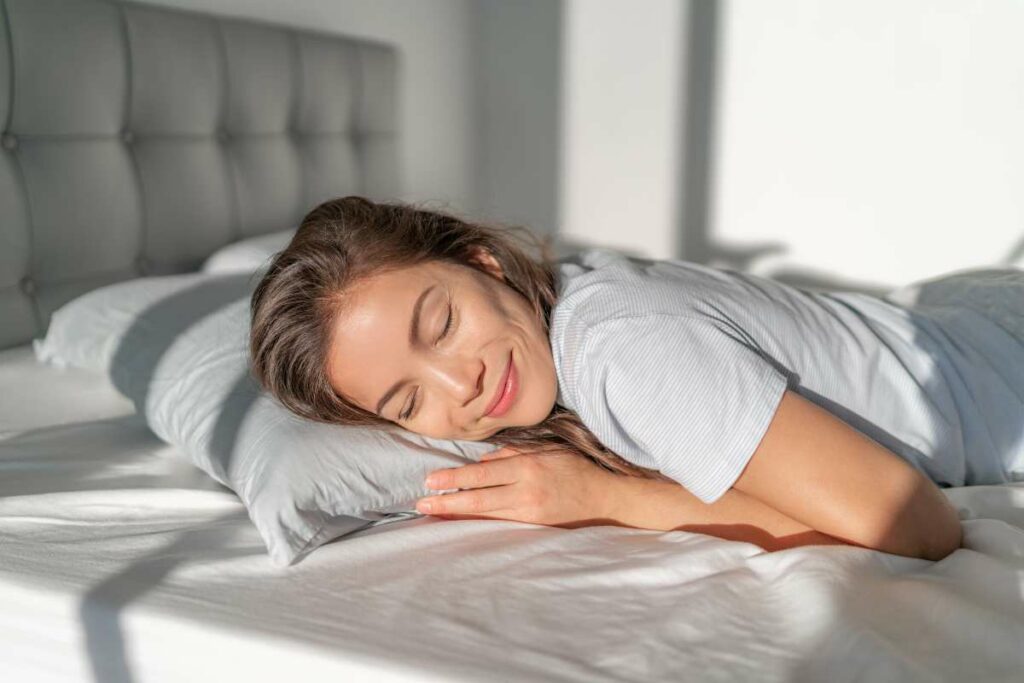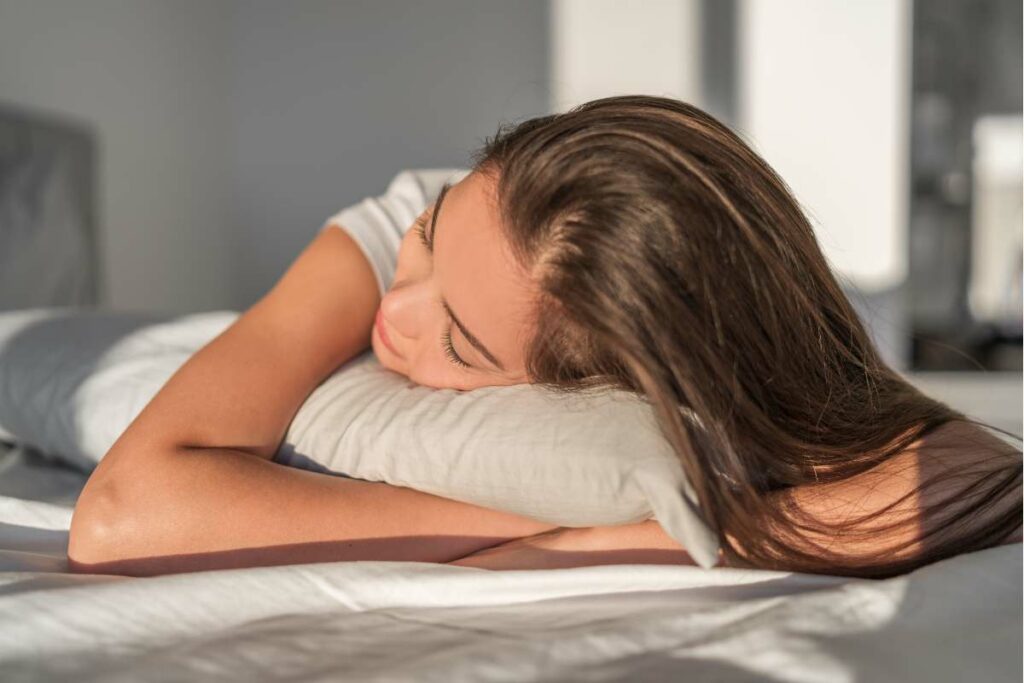
It is important to your health and wellness to get a good night’s sleep. But on their behalf, most people lie awake in beds with stuffing types that are not supportive enough of the body. The choice of mattress material can be a very crucial issue with the regard to sleep quality as well as back pain problems. This detailed guide will take you through pros and cons of diverse mattresses options that will assist you in choosing a mattress that meets your requirements and preferences.
Good sleep is crucial to cognitive function, mood, immunity, and health in general. Insomnia and sleep deficiencies are very common among adults and they should aim at least 7-9 hours of restful sleep per night. A mattress that does not adequately support the spine and alleviate pressure points can cause discomfort and sleep problems like back and neck pain. Investing in a body specific and sleep specific mattress is worthwhile as it improves comfort, supports spinal alignment and allows one to wake up refreshed and ready for everyday challenges.
Different Mattress Materials and Types
There are several common mattress materials and types to consider:
Memory Foam Mattresses
Memory foam mattresses conform closely to the contours of the body in response to pressure and weight. This “cradling” effect provides customized support and relieves pressure points, making memory foam well-suited for side sleepers or those with pain issues. Memory foam also absorbs motion well, so you won’t feel a partner tossing and turning on the other side. The downside is that memory foam tends to retain body heat, making it a poor choice for hot sleepers. Gel infusions help some newer memory foam sleep cooler.
Latex Mattresses
Latex mattresses provide contouring support similar to memory foam, but with more natural bounce. Natural latex comes from the sap of the rubber tree. Synthetic latex is manufactured from chemicals meant to emulate the properties of the natural material. Many people find latex mattresses sleep cooler than memory foam. They are also quite durable, with an average lifespan of 8 years or more. Latex offers excellent pressure relief, especially in the shoulder region. The responsive quality makes latex a good choice for combination sleepers who change positions frequently.
Innerspring Mattresses
Traditional innerspring mattresses contain steel coil springs in layers to provide support. The open structure promotes airflow and makes innerspring a good choice if you tend to sleep hot. The spring system offers nice bounce and edge support. However, motion isolation is poor, meaning you’ll likely feel your partner’s movements throughout the night. Innerspring mattresses tend to have shorter lifespans than foam or latex on average, lasting 5-6 years before needing replacement. That said, regular rotation can help extend an innerspring mattress’s longevity.
Hybrid Mattresses
Hybrid mattresses combine the support of steel coils with comfort layers of latex, memory foam, and/or other materials. This blended construction provides a balanced sleeping surface with contouring pressure relief and buoyant lift. Added foam and latex also dampens motion transfer for couples. And like innerspring models, the hybrid structure encourages airflow to help manage sleep temperature. Lifespans range from 6-8 years for most hybrid mattresses. Overall, hybrids offer great versatility to suit multiple sleeping positions and preferences.
Wakefit Orthopedic Memory Foam Mattress 6-Inch King Size 78x72x6 Inches White
Rs. 12,997 in stock
SleepyCat Latex Mattress|10 Years Warranty |Firm,Orthopedic 6-Inch Hybrid Mattress with Pinhole Tech Latex&Memory Foam Layers|5-Zone Support&Bamboo Cover(Queen Size,78X60X6Inches)
Rs. 13,940 in stock
LINENSPA 6 Inch Innerspring Mattress - Twin
Choosing the Best Mattress Type for You
The optimal mattress varies based on sleeping position:
Best Mattresses for Side Sleepers
Side sleeping concentrates weight on the hips and shoulders. To properly cushion these pressure points and keep the spine on an even plane, side sleepers need a mattress with a soft to medium comfort level. Memory foam and latex mattresses excel at relieving pressure while supporting side sleepers’ curves.

To reduce shoulder pain, look for zoned construction designed to offer enhanced cushioning in the upper body region. Side sleepers who wake with numb arms likely need a softer mattress or additional shoulder support.
Best Mattresses for Back Sleepers
Back sleeping spreads weight more evenly across the body’s surface. To keep the spine properly aligned in this position, back sleepers require a mattress with medium to firm support. Added lumbar support is also beneficial. The right surface keeps the hips from sagging to avoid back aches.
Latex and hybrid mattresses provide the right blend of contouring and lift for back sleepers. If you sleep hot, choose a hybrid model to allow air circulation and heat dissipation.
Best Mattresses for Stomach Sleepers

Stomach sleeping concentrates pressure in the midsection. Without adequate support, this can cause the hips and abdomen to sink in, straining the spine. Stomach sleepers need a firm mattress to keep everything on an even plane.
Innerspring or hybrid mattresses offer the best support. Look for robust coils in the center third to resist sagging. You can also use a thin pillow under your abdomen and pelvis to prevent excessive sinking.
Best Mattresses for Combination Sleepers
Combination sleepers who switch between positions need a mattress with responsiveness and bounce. Excessive sinking and contouring can make moving around difficult.
Hybrid mattresses offer the greatest versatility for combination sleepers with the lift of coils and the body-conforming properties of foam or latex. Innerspring mattresses also respond well to changes in position.
Mattress Materials to Avoid
Certain mattress materials should be avoided:
- Toxic chemicals: Some mattresses contain concerning chemicals like formaldehyde as flame retardants and adhesives. These can be released as gas emissions, potentially causing respiratory issues and other health problems. Brands like Essentia make explicitly non-toxic mattresses.
- Low-quality fiberglass materials: Cheaper mattresses are sometimes padded with low-density fiberglass. While encased, holes or tears in the cover may expose irritating fibers that can also pose respiratory risks if inhaled. Such fiberglass may also lack durability over time.
- Worn-out mattresses: Mattresses wear out over time, losing their ability to properly support and contour to the body. Old mattresses could also fail to meet newer safety standards. As a general rule, mattresses should be replaced every 7-10 years. Sagging, poor sleep, and stiffness are signs your mattress needs an upgrade.
Finding the Perfect Mattress for Your Needs
When mattress shopping, carefully consider factors like your weight, typical sleep position, any pain issues, and special pregnancy needs to select the best option tailored for you. The goal is to match your individual comfort requirements for optimal rest.
For example, heavier individuals and couples need a thicker, more durable mattress to support their weight without sagging prematurely. Those with chronic back pain should look for targeted pressure relief and support features. Side sleepers almost always benefit from a softer mattress.
Here are some other key shopping considerations:
Mattress Size
Consider your height, weight, whether you share the bed with a partner or pets, and room size when selecting mattress size.
- Twin and Twin XL suit single sleepers with limited space.
- Full may work for solo sleepers who want extra room.
- Queen offers adequate space for couples.
- King or California King provides maximum room for couples.
Expected Lifespan
- Memory foam and latex mattresses typically last 6-8 years or longer
- Innerspring mattresses tend to last 5-6 years
- Hybrid models range from 6-8 years
Trial Period
Many top brands offer 90-120 night home trials to test the mattress.
Return Policy
Understand the return policy for getting a refund if the mattress is unsuitable. Some brands deduct shipping fees.
Warranty
Look for at least a 10 year warranty against defects and premature sagging. High quality mattresses often come with a 20 year warranty.
Caring for Your Mattress
Caring properly for your mattress helps it last its full lifespan:

- Rotate head-to-foot every 3-6 months to promote even wear and tear. This prevents permanent body indentations from forming.
- Use a mattress protector to shield your mattress from stains, spills and other damage. Look for breathable, waterproof protectors.
- Spot clean stains immediately using an enzymatic cleaner to avoid setting the stain. Let any damp areas fully air dry before remaking the bed.
- Deep clean every 6-12 months using your mattress manufacturer’s recommended method. Typically this involves vacuum cleaning, spot treating with an enzyme cleaner, and deodorizing with baking soda.
- Avoid flipping unless specifically recommended for your mattress model. Most modern mattresses are not designed to be flipped. However, rotating the mattress 180 degrees can help it wear more evenly.
- Replace bedding every few years to reduce dust mites, bacteria, and allergens. Wash sheets weekly in hot water to kill germs and remove body oils.
- Use a box spring that properly matches and supports your mattress per the manufacturer’s instructions. Mismatched foundations can void the warranty.
What is the difference between memory foam, innerspring and latex mattresses?
When shopping for a new mattress in India, you will come across three main types – memory foam, innerspring, and latex mattresses.
Memory Foam Mattresses
Memory foam mattresses are made from viscoelastic polyurethane foam that molds to the shape of your body in response to heat and pressure. This contouring effect helps relieve pressure points and provide excellent overall body support.
Some key features of memory foam mattresses:
- Material: Made from polyurethane foam, sometimes infused with gel to help regulate temperature
- Feel: Initial soft, sinking feeling as foam molds to your body shape
- Pros: Excellent pressure relief, minimal motion transfer, long lifespan (6-8 years on average)
- Cons: Heat retention, some odor initially, can feel like “sinking in” to some people
- Price Range: ₹7,000 – ₹60,000
Innerspring mattresses
Innerspring mattresses contain steel coil springs in their core support system. This internal structure provides bounce, support, and airflow.
Some key features of innerspring mattresses:
- Material: Steel coil springs form the core, with upholstery layers added on top
- Feel: More traditional springy, bouncy sensation
- Pros: Good airflow, firm spine support, usually cheaper
- Cons: Motion transfer, less contouring effect, shorter lifespan (~5 years)
- Price Range: ₹5,000 – ₹30,000
Comparison of Innerspring and Memory Foam Mattresses
| Parameter | Innerspring | Memory Foam |
| Material | Steel coils | Polyurethane foam |
| Feel | Bouncy | Sinking, contouring |
| Motion Isolation | Poor | Excellent |
| Durability | 5 years avg | 6-8 years avg |
| Price (Queen) | ₹10,000 – ₹25,000 | ₹15,000 – ₹50,000 |
Latex Mattresses
Latex mattresses provide buoyant support from the springy, naturally sourced latex foam. This makes them pressure-relieving as well as durable.
Some key features of latex mattresses:
- Material: Natural or synthetic rubber tree sap foam
- Feel: Responsive, bouncy yet contouring
- Pros: Excellent durability, breathable, antimicrobial
- Cons: Expensive, heavier than other mattresses
- Price Range: ₹25,000 – ₹90,000
So, memory foam contours closely to the body for pressure relief but can sleep hot; innerspring is bouncy, breathable and budget-friendly but lacks motion isolation; latex combines pressure relief and bounce with unmatched durability and antimicrobial properties, but comes at a premium price point. Choosing between these three main options depends on your budget, sleep position, pain points, and preference on mattress feel.
Which type of mattress is better suited for back pain?
Back pain is a common problem faced by many Indians. An uncomfortable or improper mattress can often worsen back pain. When choosing a mattress to help alleviate back pain, there are several key factors to consider including mattress firmness, mattress type, and mattress size relative to your body frame. Here is an overview of the most common mattress types available in India and how they can impact back pain:
Mattress Firmness
Mattress firmness is one of the most important factors when choosing a mattress for back pain. The table below summarizes recommendations for mattress firmness based on your typical sleeping position:
| Sleeping Position | Recommended Firmness |
| Back sleepers | Medium-firm to firm |
| Side sleepers | Medium to medium-soft |
| Stomach sleepers | Firm |
As the table shows, back and stomach sleepers need a firmer mattress to keep the spine properly aligned, while side sleepers need more cushioning pressure relief at the shoulders and hips.
Mattress Types
There are several different mattress types available on the Indian market. The pros and cons of each for back pain relief are summarized below:
Innerspring Mattresses
These contain metal coils or springs.
| Pros | Cons |
| Generally firmer support | Older coil models may sag over time |
| Many firmness options available | Coils can create pressure points |
| Moderate pricing | – |
Memory Foam Mattresses
These contain memory foam layers that contour to the body.
| Pros | Cons |
| Excellent pressure relief | Can retain heat |
| Good motion isolation | Some odor when new |
| Wide range of densities/firmnesses | Off-gassing possible |
Latex Mattresses
These contain natural or artificial latex foam layers.
| Pros | Cons |
| Responsive support for spine | Expensive |
| Naturally cooling | Heavy to move |
| Long lifespan | – |
Air Mattresses
These allow manual firmness adjustment through air chamber inflation levels.
| Pros | Cons |
| Fully customizable firmness | Air chambers can fail over time |
| Ability to re-adjust whenever needed | More expensive |
| Accommodates range of sleep positions | Some noise from air pumps |
Mattress Size Considerations
In addition to firmness and type, choosing the right mattress size can impact comfort and support. Based on body frame, ideal mattress sizes are:
| Body Frame | Ideal Mattress Size |
| Small | Twin or Single |
| Medium | Queen or Full |
| Large | King or Extra-Large |
Choosing a mattress size proportionate to your body frame helps keep the spine properly aligned. Mattresses that are too small may create pressure points while oversized mattresses may lack support.
Based on these factors, medium-firm memory foam, latex, or adjustable air mattresses often provide the best combination of responsiveness and pressure relief for back pain.
How thick a mattress should you get?
When shopping for a new mattress, one of the key decisions is how thick or tall you want it to be. Mattress thickness ranges widely, from as little as 5 inches to as much as 22 inches. So what is the optimal mattress height for your needs? There are a few factors to consider.
Comfort Level
A thicker mattress does not necessarily equal a more comfortable mattress. Comfort has more to do with materials, underlying support, and personal preference. However, a too-thin mattress that does not adequately support your body can lead to discomfort. Here are some general guidelines based on mattress type:
Recommended Mattress Thickness by Type
| Mattress Type | Thickness Range |
| Memory foam | At least 10 inches |
| Hybrid | 10-16 inches |
| Innerspring | At least 10 inches |
| Latex | At least 10 inches |
As the table shows, most experts recommend a 10 inch thickness as the minimum for proper comfort and support, with ideal ranges between 10-16 inches depending on mattress construction.
Body Type
Your body frame and weight should factor into the equation as well. People who weigh over 230 pounds often prefer a thicker mattress for proper cushioning. Some guidelines:
Recommended Thickness by Body Type
| Body Type | Thickness |
| Average weight (130-230 lbs) | 10-14 inches |
| Heavy weight (230+ lbs) | 12-16 inches |
| Lightweight (<130 lbs) | 8-12 inches |
Mattress Height
Standard mattress sizes have corresponding mattress heights that work well with most bed frames, sheets, and bedding. Refer to this table for typical mattress heights by size:
Standard Mattress Thicknesses by Size
| Mattress Size | Thickness Range |
| Twin | 8-16 inches |
| Full | 8-16 inches |
| Queen | 10-16 inches |
| King | 10-16 inches |
| California King | 10-16 inches |
As shown in the table, queen, king and California king sizes often need thicker profiles between 10-16 inches for proper fit with bedroom furniture and accessories.
Most sleepers do best with a new mattress between 10-16 inches thick, with heavier individuals opting for thicker versions 12 inches or higher. But comfort, body support, and mattress height matter more than overall thickness alone.
Conclusion
To get the best sleep, choose a mattress material that is right for your body and sleep style. Consider whether memory foam, latex, innerspring, or a combination meets your needs in terms of contouring, bounce, and cooling. In addition, take into account a regular sleep position, weight, pain points, and other peculiar requirements. Your sleep health and quality of life, as well as issues such as back pain, depend on investing in a good, specifically designed, mattress. The “Mattress Match” tool, buyer’s guides, and hands-on mattress testing will be of great help towards personalized recommendations. Do not worry, you will definitely find your sleep sanctuary. Sweet dreams!









